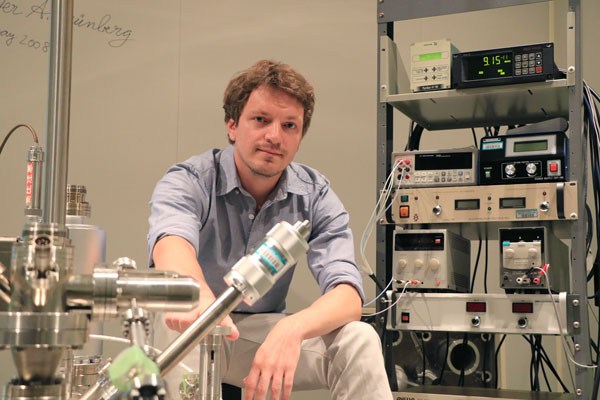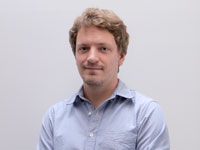Dec. 28, 2018
Instrumental advances in physics
Christopher Butler, Special Postdoctoral Researcher
Please describe your role at RIKEN
I work in condensed matter physics in Dr Tetsuo Hanaguri’s Emergent Phenomena Measurement Research Team. We use scanning tunneling microscopy (STM) to visualize the behavior of electrons at crystal surfaces, especially the peculiar collective behavior of a large number of interacting electrons.
How has being at RIKEN helped your research?
As part of Dr Hanaguri’s team, I feel like I have moved from the outskirts of the STM community to somewhere close to the center, as we develop and use STM instruments that are among the most advanced in the world.
Please briefly describe your current research. Why is it important?
I’m investigating a type of material called a Mott insulator. This material should conduct electricity but doesn’t, because electrons get stuck in a ‘traffic jam’ due to their strong interactions with each other. Useful phenomena can emerge from this behavior, like high-temperature superconductivity, which is the disappearance of electrical resistance.

What do you think has been the most interesting discovery in your field in the last few years? How has it influenced your research?
Many recent high-profile discoveries suggest the collective behaviors of a huge number of electrons are better described as new kinds of particles—‘quasiparticles’. In this sense, crystalline materials are like mini-universes, with their own physical laws and their own ‘fundamental particles’ that differ from the fundamental particles of our wider Universe. Quasiparticles can mimic theoretical particles we haven’t yet observed, such as Majorana particles, fermions with their own antiparticle and zero charge. One of our aims is to understand how such Majorana quasiparticles come to exist, and how they could be controlled and perhaps put to use for quantum computing.
“My research is important for sustainable development because….”
… with the right electronic behavior in the right materials, scientists may be able to build a quantum computer, and there is no major problem we face as a society that is not made easier to solve by having a better computer!
How did you find moving to Japan?
Having lived in Taiwan for eight years meant I was culturally well prepared for Japan, and I was hugely helped by organizers from the Special Postdoctoral Researchers Program and lab assistant Ms Naoko Mitsuzawa in all aspects of moving and adapting to life in the lab.
What are some technologies you use?
I use a scanning tunneling microscope that scans samples in an ultrahigh vacuum (comparable to outer space) at about 0.4 degrees above absolute zero (much colder than outer space!), and in a 12-tesla magnetic field (a few thousand times stronger than a refrigerator magnet). One of our team members, Dr Tadashi Machida, has built an ultrahigh-vacuum scanning tunneling microscope cooled to below 0.1 degrees above zero by a dilution refrigerator, with a 17.5-tesla magnet. The overall performance of this dilution-refrigerator microscope may well be the best in the world at this time.

